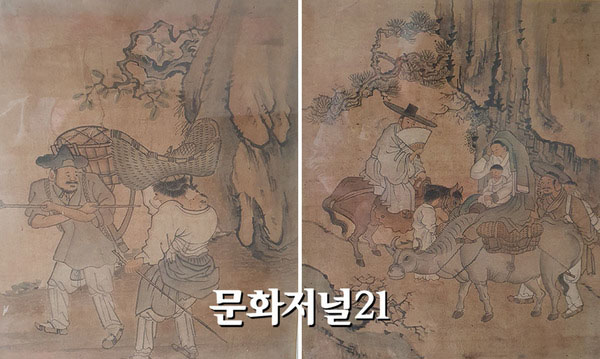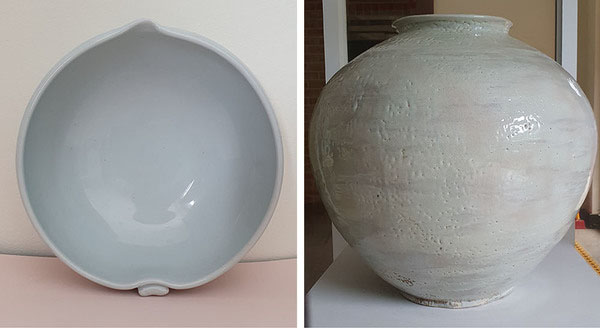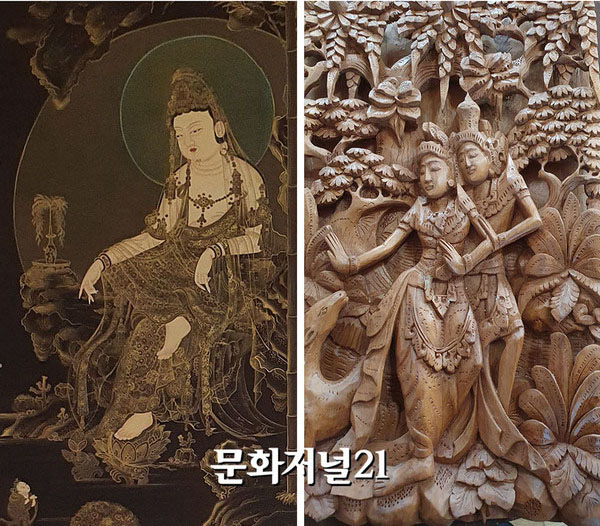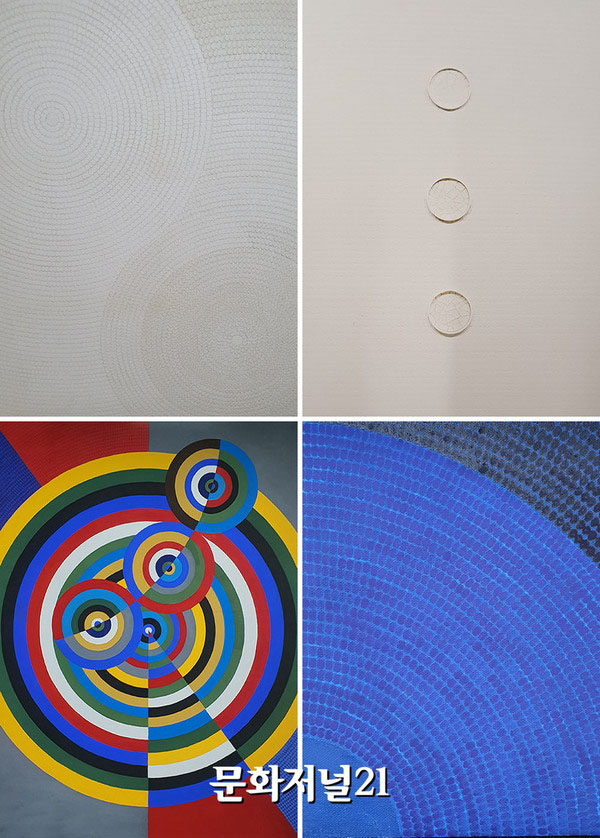Ⅰ. His life and art are majestic and intense dramas covered with sweat and tears

◇ Material: Colored on paper (muk/octuary) ◇ Production year: 1970 ◆ Wind speed (original reproduction of Kim Hong-do)
◇ Dimensions: 32×38 cm (width×length) ◇ Material: Colored on paper (muk/octuary)
◇ Production year: 1970 (photo = Culture Journal 21 DB / File photo)
Artist Park Jong-yong was born in December 1953 in Bonggok Village, Naegok-ri, Yeohyang-myeon, Haman-gun, Gyeongsangnam-do, a quiet mountain village with only 30 households,
as the second of two sons and four daughters of his father (Park Ki-bong) who was a teacher at the time and his mother (Jeon Wook-nam) who was engaged in housework.
As was the case with the countryside back then, he spent his childhood running around in the hills with his brother and friends, fishing and catching cicadas, and at the age of 8 (1960), he entered Oeam Elementary School located in Yeohang-myeon, about 4 kilometers from his home, and walked around in rubber shoes. It is a typical example of a rural village in the 1960s.
"Shall We Exemplify Destiny?" Not long after entering elementary school, my father, a calligrapher and painter, returned to his hometown (Haman) on a weekend and started drawing cartoons next to me when he was drawing at a detached house. It was already 60 years ago.
His father, who was a teacher, showed excellent skills in calligraphy and painting, and his elder brother (Jongheon), who is two years older, also began to draw as soon as he entered elementary school.
I don't know if it's the influence of this family, but Park Jong-yong, who started painting at the age of 8, lit the lantern and drew various paintings such as figures and landscapes, and on his way home from school about 4km away, he would take a break from time to time and take out notes in a book bag and sketch village scenes and farmers.

◇ Year of production: 1979 ◆Sansu ◇ Material: Colored on pure paper (Oriental paint)
◇ Size: 65×43.8 cm (width×length) ◇ Year of production: 1979 (photo = Culture Journal 21 DB / File photo)
Back then (1960s), it was common to spend his childhood playing marbles, dabbing, and seolmaegi, but Park Jong-yong devoted himself to drawing rather than living a daily life of play.
He also made various (dolls) with sickles, kitchen knives, and pencil knives in his spare time. As such, his childhood was consistent with drawing and carving.
In particular, when I drew and showed Hwatu paintings at the age of 12, I heard the word 'Grim Shindong' from people around me. Inspired by the praise of 'Grim Shindong', Park Jong-yong decided to become a painter who will remain in history such as Solger from this time on. As such, fate was decided by itself from childhood in the process of painting by lighting a lantern like a person of gods, or in the process of constantly drawing or sculpting numerous paintings while taking a break on the way back from school. Indeed, it is a heavenly achievement.
After graduating from elementary school, Park Jong-yong, who knew his dream of becoming an artist and started painting various paintings, studied in Masan and started his boarding life (Masan Changsin Middle School). In addition to painting, Park's middle school years were a time when he devoted himself to sports, such as boxing and marathon running. However, his interest was in art, and he devoted himself to painting.
During this time (in middle school), he drew characters (portraits) of movie stars with pencils and ink pens in the room of his boarding house, frequently sketching the sea scenery on the beach in front of Masan with a sketchbook on Saturdays and Sundays, and went up to Mt. Muak in Masan to sketch the scenery of Mt. Muak, wildflowers in the field, and flowers in the garden, and completed them into works.
In addition, during this period, he participated in the Jinju Gaecheon Arts Festival, the Gyeongju Silla Cultural Festival, and other large and small (student) contest, and his paintings were always hung in pairs at the school (Changsin Middle School). It was also a time to further strengthen the dream of the future of a great painter.
After entering middle school, his father, who learned that he was becoming more absorbed in sports and art, expressed concern about aberration by saying, "Athletes and painters starve to death," but he fell into a state of resignation because he could not break his son's will (Park Jong-yong). Park Jong-yong's middle school life was consistent with exercise and painting, but his dream was to become a great painter.
As such, Park Jong-yong's middle school years were a fierce period of hard work, such as boxing and marathon, and drawing. In particular, he entered Changsin High School (Masan) in 1968 and won first place in the Korea-Japan Friendship Marathon (Ministry of Secondary Education) held in Busan that summer. The marathon had a considerable impact at the time and became a driving force for scouting Park Jong-yong as a specialist in sports at Yangjeong High School, which produced Son Ki-jung, the winner of the 11th Berlin World Olympics Marathon, the following year (1969). In addition, he was employed as a Goryeo folk artist at the same time as Sang-kyung in 1969, which became the background for him to expand the Insadong era in earnest.
Although he had been scouted as an (athletic) specialist, he was selected as a Goryeo folk art painter, the object of envy at the time, and set up a studio in Insa-dong to begin his work.
Except for the time indispensable for maintaining his studies, such as exercising as a special physical education student and (supplemental) classes, he focused only on painting.
As soon as I finished school class in the morning, I ran to the studio in Insa-dong and drew like crazy. Park Jong-yong's days in Insa-dong began to rise like this.
He threw himself into the furnace of art to realize his dream of becoming a great painter. It was in the summer of 1969, when he was only 17 years old.
Anyway, this is how his days in Insa-dong (1969~) began. In a way, it spontaneously entered the path of a desperate artist following a revelation of fate. When he saw Jogyesa Temple's Dancheong, he began to draw discord, drew portraits of U.S. soldiers on the triangle, and drew cartoons and theater signs in Chungmuro and other places. He also harshly disciplined himself, visiting Cheonggye Stream's Everything Market and drawing all kinds of paintings and antiques pouring out whenever he had time.
As such, Park Jong-yong's art (art) seems to have been formed and evolved by training himself harshly without anyone's help. In this process, Park Jong-yong's art world became more skilled day by day, and his pen name became known in its own way, and it is known to have received generous praise from masters of the time such as Unbo (甫) and Kim Ki-chang (painter).
In particular, he entered Hanyang University a few years after graduating from high school, but joined the army in the fall of that year (1974), and a year later, his father, who was a teacher, suddenly passed away, and after discharge (1977) he was in a position to be responsible for maintaining the livelihood of his mother and siblings. As I gave up my studies, I had no choice but to enter the path of commercialization.
It was a situation that could cause regret in my heart.

◇Year of production: Early 1980s ◆Pottery (pot) ◇Materials: kaolin and white clay ◇Size: 41×49×41 cm (width×length×width)
◇Year of production: Early 1980s (photo = Culture Journal 21 DB / File photo)

◇ Year of production: Early 1990s ◆ Water pipe chromaticity ◇ Material: Gold color (grain) ◇ Size: 65×122 (width×length)
◇ Year of production: 2020 (Korea) (photo = Culture Journal 21 DB / File photo)
After being discharged from the military in August 1977, he/she buried this pain in his/her heart and moved around Insa-dong, Yongin, and Cheonan atelier in earnest, shedding tears and drawing various Buddhist paintings such as portraits, landscape paintings, flower paintings, still life paintings, tomb paintings, various folk paintings (chaekgado, Baekdongjado, kkachi tiger, etc.) and Sansindo, Toxicado, Byeonsangdo, and Suwolgwaneumdo were painted day and night. In particular, during the days of Yongin (1979-1990) and Cheonan (1990-2006), he/she struggled to live by spreading to all genres such as ceramics, sculptures, prints, and tile paintings beyond flat art. Fortunately, he/she made a living through transactions with Japan.
It is a fierce life drama that cannot be read without tears.
Ⅱ. of Park Jong-yong's hands.I'm looking forward to what's future
As we have seen, artist Park Jong-yong's life and life (art) history were a series of indescribable hardships and adversities. It was a tearful life. In particular, during the days of Yongin (1979-1990) and Cheonan (1990-2006), it spread to all genres such as ceramics, sculptures, prints, tile paintings, etc. beyond flat art to save families and siblings, and it is said that it has become 別稱 (named) as an "alchemist of art" and an "all-weather artist" as its fully matured beauty is added.
In this process, many of the works I created during difficult times fell to the other side of history and went into a 失, shedding tears of regret and longing for the art of living and breathing on this earth forever. It was an inevitable flow and revelation of fate. As we have seen, Park Jong-yong's life and life (art) history have been a series of indescribable hardships and adversities.
It was a tearful life. In particular, during the days of Yongin (1979-1990) and Cheonan (1990-2006), it spread to all genres such as ceramics, sculptures, prints, and tile paintings beyond flat art to save families and siblings, and it is said that it has become a 別稱 (named) as "Alchemist of Art" and "All-weather Artist" as it has been added to its matured beauty.
In this process, many of the artworks that were created during difficult times fell to the other side of history and became a 失, shedding tears of sorrow and longing for the art of life that lives and breathes on this earth forever. It was an inevitable flow and a revelation of fate.

◇Materials: Soil and Grain on vinyl cloth ◇Size: 91×116 (width×length) ◇Materials: Madae, Soil, Grain, and Dancheong
◇Materials: 73×91 (width×length) ◇Materials: Madae, Soil, Grain, and Dancheong ◇Materials: Madae, Dancheong
◇Materials: 73×91 (width×length) ◇Materials: 73×91 (width×length) =Materials: 2019 (photo ◆ Culture Journal 21 DB / Data Photo)
After much meditation, he started an abstract expressionist work that captures the mystery of the universe in handwritten language in Cheonan atelier in the winter of 2004.
However, he experienced a shocking failure in the early years (2004-2005). He was devastated by works that were considered poor masterpieces at a time when he was proud to express works of all genres in a versatile manner, and began his career by sweating beads at Seoraksan atelier in 2006.
They began to struggle again for a new life art (abstract expressionism). Another history of storm and road rage toward life art crossing boundaries began, and it wasn't until about 10 years later, around the winter of 2015, that in-depth works began to be created. Three years later, a number of works of life (abstract expressionism) containing solitude, mystery, rhymes, and awards were finally born.
The artist used to describe this process as "a harsh period, like when a bear struggled in a cave to become a human."
Abstract expressionist works created in this way created a craze when they revealed their flesh at the Seoul Arts Center in January last year and the Chuncheon KBS exhibition in March.
I also attended these exhibitions and gave a congratulatory speech. In particular, at the Seoul Arts Center exhibition, Koh Hak-chan (Seoul Arts Center) was thrilled that the largest number of people attended since the opening of the Seoul Arts Center.
The hot exhibition craze started the era of the audience and made him rewrite his artistic history. It is seen as the beginning of a new journey toward myth creation by melting the scars of human history in the melting pot of art. It is a signal that heralds an emergency for the world.
Park Jong-yong, who started his work (sketch) at the age of 8, is an author of Cheung who has never put a brush aside in the 60 years leading up to this day. In particular, due to the sudden death of his father when he was a young man, he had to stop studying as he shed tears to maintain a living for his family and siblings. In addition, while working like a slave in those difficult times (from the mid-1970s to the mid-2000s), he continued to self-train himself, vowing to be martyred in art, and finally gave birth to works of abstract expressionism with solitude, mystery, rhyme, and awards.
Like his monologue, he drove through the pain of countless years with desperation that "the stones were worn out and turned into powder...." His life is a history of stormy old man struggling for life and art. He is a 廣 artist who finally came up with a new art of abstract expressionism while overcoming all the trials of his life with an indomitable will.
The new abstract painting created in this way caused a great repercussion, and it is known that not only was it praised by the U.S. Yusuhwarang,
but also expressed its intention to invite France and Japan while paying attention. The world art world beckoned Park Jong-yong's art, which achieved a feat (abstract expressionism) in the end with an indomitable will in the 60 years of his character. The light of Park Jong-yong's art began to shine to the world.






